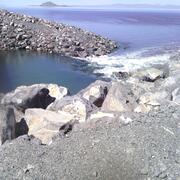Daniel K Jones
Since joining the U.S. Geological Survey as a Geographer in 2012, Dan's work has focused on the use of Geographic Information Systems (GIS) and remote sensing data to solve watershed-scale questions associated with catastrophic storms, urban development, and resource protection.
Dan also serves as the lead of the Geospatial Analysis and Applications Core Technology Team, a group of geographers, programmers, and statisticians focused on questions related to contaminants and environmental health across spatial scales.
During his university studies, Dan's research focused on using LiDAR to track watershed-scale geomorphic changes associated with the suburbanization of small, historically agricultural watersheds in Montgomery County, MD. During his degrees, Dan worked as a research support specialist at the Baltimore Ecosystem Study Long Term Ecological Research station, assisting in the long-term data collection of water, sediment, and vegetation samples associated with the project.
Education and Certifications
M.S. Geography and Environmental Systems, University of Maryland, Baltimore County, 2013
B.S. Environmental Science, University of Maryland, Baltimore County, 2009









